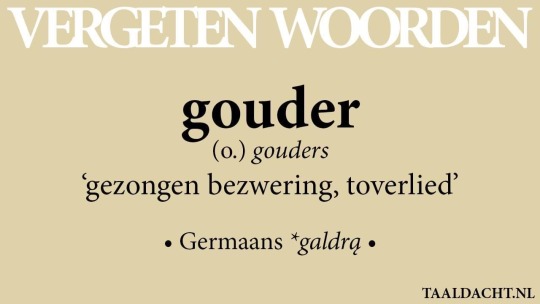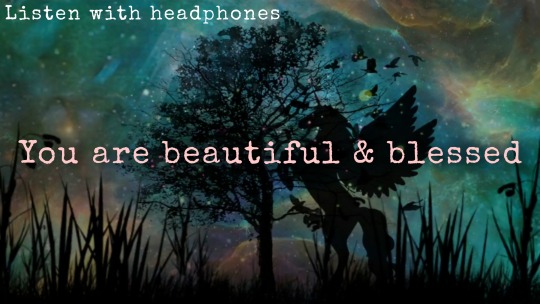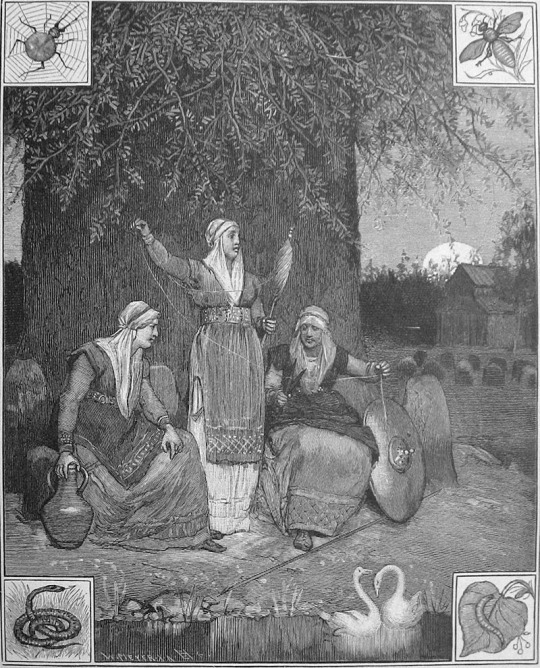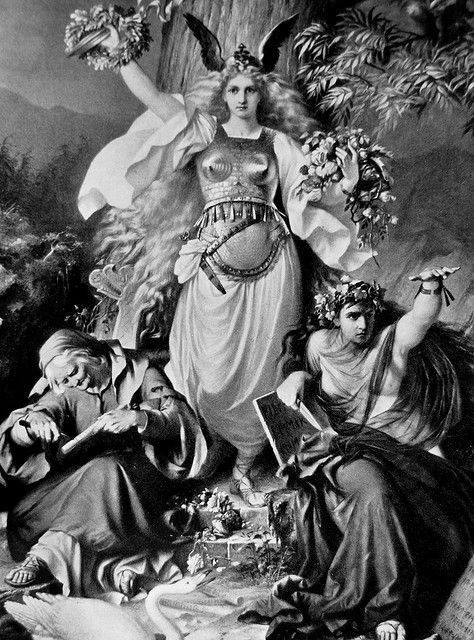#galdr
Explore tagged Tumblr posts
Text

When in doubt, just draw a lil man. A lil dude. Just a lil guy.
#runes#nordic#norse heathen#icelandic#folkmagic#witchcraft#occult#magick#magic#volva#vitki#sorcery#runemagic#oldgods#odin#heathen#galdrastafir#galdr
64 notes
·
View notes
Text

A bindrune sigil I crafted based off a rune reading for the commissioner.
One of self-warding branches softening in the Winterthaw.
#my art#art#lunaarcana#dark art#bindrune#sigil#galdr#sigilcraft#runic#runes#occult#witchy#witchcraft#pagan#pagan art#gothic
224 notes
·
View notes
Note
I want to learn seidr but idk where to start or what resources are even valid and not tainted by bigotry or transphobia. A lot of posts are very vague, too. So I have no idea what they actually mean. Any thoughts?
Hello! Thank you so much for the ask.
Seiðr is quite the mysterious practice, which is why you must have found difficult to find trustworthy sources, or even one that could clearly define its nature. We currently know very, very little about it. What we do know for sure is that it was a form of pre-Christian magical practice, the uses of which stretched from divination to healing, luck-bringing, controlling weather and making game plentiful (archaeologist Neil Price). It was neither a force of "good" nor one of "evil", as it could also be used to fulfill malicious purposes, such as to cause conflicts or cast curses.
Unlike galdr, which was often practiced by men, seiðr was seen as a rather "feminine" practice. But as always, there have been exceptions to this: after all, mythology has it Óðinn himself, in his eternal search for knowledge, had learned to master seiðr! Though it was considered dishonorable for men to practice it back in Iron Age Scandinavia, it was common enough for a word to describe such men to emerge: seiðmenn. For this reason, neither galdr not seiðr are (or ever have been) confined to specific genders. This, I felt compelled to specify, especially since you've mentionned having stumbled upon many transphobic posts in your research. Galdr and seiðr do not belong to any given gender.
Another difference we could find in modern practice as opposed to historical practice is the means to reach the seiðrkona's staple trance. Archeological finds have informed us that the practice often would have involved trance-inducing intoxicants, which would have enabled the practionner to receive visions and use divination. It's possible for us to recreate such conditions in vastly different ways, namely, using music, chants, repetitive motions and the like.
Now, what's interesting to note is that the Goddess Freyja was also said to be a master of the art. Since she is often thought to be the archetype of a völva, magic practitionners who famously carried a long staff which was crucial to their craft. The term völur actually means "staff carrier", or "wand carrier". This means that to anybody seeking to re-construct this practice, the use of some sort of staff would be near essential.

Though the accounts describing völur and their work are sparse, it's still possible for us to make out a few recurring informations: they were wanderers (and were generally viewed as standing apart from society), which makes them likely to have had some sort of connection with the God Óðinn, and they went from village to village to offer their help and insights. When welcomed into a household, it's very likely they would have been offered to sit at the head of the table, replacing whoever was the head of house in their seat. This means that their presence was considered of the highest respectability. If you're interested in learning more about völur, I suggest checking out the Saga of Erik the Red, which contains the most detailed account of a völva known today.
Another interesting detail to be noted about seiðr is that weaving, whether it was physical or metaphysical, was a central part of the practice. After all, the Norns, who weave the Wyrd, are said to be the greatest of Seiðkonur. Another mythical element to support this theory is that Freyja as a deity seems to share lots of common points with Frigg. In fact, it's very likely the two were worshipped as one deity at some point in time, and depending on the areas. While Freyja is said to be a magician, capable of surviving a pyre thrice, famously, Frigg is more a clairvoyant master of divination, able to foresee the future. And both these different types of witchcraft could very well be considered seiðr practices! Now, Frigg is often depicted weaving using a spindle. That's because her myth has it she is the one who weaves the clouds, and is therefore a talented artist in this domain, which furthers the connection between magic (or at the very least, divination) and the textile arts. It's also interesting to note that the Nornir and Frigg have one major element in common: their ties with fate. While the Nornir weave fate, Frigg knows everything that's to come in the future, though she never speaks a word of it. This particular element of their respective stories greatly emphasizes the imortance of divination and foresight within seiðr practices.
Though I do work with witchcraft, I don't consider myself a practionner of this art per say. That's because oftentimes, the nordic magic I use takes the form of rune-carving, a practice inherent to taufr instead of seiðr. What little information we have on seiðr is unfortunately not enough to determine exactly how it was practiced, apart from the fiew hints here and there. I'm sorry that I can't be of much more help concerning this topic, but I'll link below a few online articles to check out if you're interested in some further reading.
Seidr
Seiðstaffs of the Völur
Encounters with Völur
Seiðr & Shamans: Defining the Myth of Ritual Specialists in pre-Christian Scandinavia (online)
Manning the High Seat: Seiðr as Self-Making in Contemporary Norse Neopaganisms
Interpreting Old Norse Magic: A Thematic Analysis of Seiðr, According to Runic Inscriptions
The double world: seidr and the problem of Old Norse 'magic'
I will also suggest the book The Norse Sorceress Mind and Materiality in the Viking World and this video, which dive a lot deeper into the topic than I could. The YouTuber Arith Härger, who has multiple times stated his adherence to inclusive heathenry, has posted multiple videos on seiðr in the past, as well.
#magic#heathenry#witchcraft#norse paganism#polytheism#norse polytheism#spirituality#paganism#norse gods#deity work#deities#pagan#seiðr#galdr
179 notes
·
View notes
Text
Ansuz
I am Önd I am breath I am the mouth I am the words I am cleansing I am the estuary I am galdr I am ljóð I am kvæði I am gerningar I am varðlokkur I am frœði I am songs I am chants I am incantations I am poems I am alliteration I am mumbling I am the spoken word I am storytelling I am the story I am reykr I am the prayers that comfort I am the words of blessing I am the…
#animism#animist#Ansuz#breath#cleansing#Galdr#kvaedi#ljod#magic#Paganism#polytheism#polytheist#Rúnvættr#Runes#Runevaettir#spirit#spirits#vaettir#vaettr#Voice#words
26 notes
·
View notes
Text
Any advise on how to start practice Galdr? Like literally how to start singing/chanting, how to go with flow?
17 notes
·
View notes
Text

Odin, god of War, Poetry, Magic and Knowledge
#odin allfather#Odin#seiðmaðr#seiðr#Norse magic#galdr#galdrar#incantations#god of magic#prophesy#magic incantation#incantation magic#runeic magic#rune magic#Norse runes#king of the gods#Aesir#Vanir#pagan magic#pagan witchcraft
17 notes
·
View notes
Text
GALDR-“Winter’s Spirit”
2 notes
·
View notes
Note
hi, I have a question. I just started researching seidr magic and I saw that it is a woman's-only magic/space and that it was a type of magic made for women, is that true? idk if this is bad to say but it would be nice if cis and trans women and afab nb witches had their own space/magic away from men who practice. I just didn't know who to ask, I see you are Norse pagan and witch, and idk if this is a bad POV, and if it is I want to correct myself...
Hey anon! This is a really interesting question so let's get into some facts:
Seidr was just one type of magic practiced during the Viking/Iron age. It is believed that seidr was more focused on prophecy and divination, and was at the time, primarily practiced by Völvas. Seidr is considered to be a way of connecting to the Nornir and accessing the threads of fate (meanwhile, today the term seidr encompasses all types of norse based magic). The connection to weaving could explain why it is believed to be considered a more feminine practice, as men did not learn these skills. Seidr can also be known as Spá/Spae, and while some people believe these are two different types of magic, they both stem from wanting to determine one's fate. The other types of norse magic include Galdr, which included chanting to help raise energy for healing and protection. Historically, it seems that any gender could practice galdr, but it tends to be viewed as the more "masculine" form of magic.
When it comes to practicing these forms of magic, we all know Odin as the defier of these social and gender norms. Odin, ruler of Asgard, does not care about the trivial genders assigned to magic, he just wants to learn, to understand the power that this form of magic holds. And while I know this information about Odin is common knowledge, I feel that it is important to highlight as it shows that rules can be broken, and gender roles do not matter. We also do not have a lot of facts about historical seidr. Most of what we know comes from the sagas, and we have found some grave sites that include distaffs and staffs that can corroborate the information in these stories. But we do not have a lot of information about how seidr was practiced. I feel that this lack of information makes it hard to form solid opinions on what seidr used to be like.
However, the term Völva/Völur is specifically a women-only role. Men could be seidmenn, seidmadr, or vitki, but never a Völva.
In today's society, Norse paganism prides itself on being gender inclusive. Anyone can practice seidr, and there are very few exclusive circles (luckily I've avoided any that might be out there). However I understand your want for a safe space. I find that my local norse pagan community is mostly comprised of males, and that is the reason that I am a solo practicioner. Tumblr is a huge help in finding like-minded, safe people to share my practice with. So while you won't find any gender exclusive magic in the practice of seidr anymore, I hope you can still find a safe space for you to hone your skills and share your thoughts.
#anon answered#anon ask#anon#seidr#galdr#norse pagan#norse paganism#witchcraft#keegs speaks#norse magic
32 notes
·
View notes
Text

Via taaldacht.nl
Gouder: gezongen bezwering, toverlied
Germaans: *galdrą
10 notes
·
View notes
Text

Solstice Love Light-Codes - Ambient Music with Light-Language for Abundance, Happiness & Peace - https://www.youtube.com/live/TGhaHHlvWYU?feature=share - Streaming now & overnight 😘🥰💖🌈🦄✌ #meditationmusic #ambientmusic #lofi #bgm #binauralbeats #ChilloutMix #lofibeats #ambientlofi #enchantedlofi #lofigirl #focusmusic #shamanicmusic #newagemusic #sleepmusic #lightlanguage #spiritualawakening #starseed #5d #ascension #lightcodes #angels #divinefeminine #goddess #vikingmusic #runes #norserunes #galdr
#bgm#background music#ambient music#sleep music#focus music#study music#art music#reading music#relaxing music#reiki music#yoga music#meditation music#meditation for anxiety#meditation#energyhealing#ascension#meditation for sleep#norse runes#runes#galdr#rune song#viking runes#norse pagan#norse music#seidr#divine feminine#goddess#goddess music#healing music#dark ambient
4 notes
·
View notes
Text
Alright who practices spell songs suggestions on reading material
0 notes
Text
Bind Runes
A bind rune is the combination of two or more runes creating a personalized symbol which can be used in magic or for personal protection. Historically these runes were used both as a personal identifier or magical talisman invoking a particular power or protection and it is this latter purpose that they are mainly used today. Types of Bind Runes Stacked Bind Rune The most common bind rune,…

View On WordPress
0 notes
Text


A stave I was commissioned to create to be tattooed that represents the true self unfettered, of flowing inner change, and of positive protection.
#my art#art#dark art#occult#witch#witchy#lunaarcana#gothic#sigil#sigilism#galdr#bindrune#runes#rune magick#rune magic#witchcraft#baltic symbols#pagan#heathen#pagan art#occultism#tattoo art#gothic art#tattoo
69 notes
·
View notes
Text
Einar Selvik's music is what I use to get into a ritual chanting/singing headspace as well! And, it may sound a bit funny, but Enya's "March of the Celts" was what I listened to when I started my pagan journey years ago so while my path has changed, that album always gets me into the ritual headspace remarkably quickly.
Short guide to varðlokkr
Briefly exploring ritual singing and spirit work in the nordic tradition, and their possible uses in neo-pagan practice.


Before performing divination, it's said that völur would sing, or more often than not, have someone sing a ritual song in order to "rouse the spirits". This ritual was a way to call upon nearby spirits—generally guardian spirits, to come and answer their questions. The practice of varðlokkur, or "ward songs/protection songs", is tightly interwoven with the art of seiðr. According to the few sources that mention the topic, it was performed by seeresses seeking to prophecize, or by women willing to sing it in their stead.
Before diving deeper into this topic however, it's important to note that the interpretation of the term varðlokkr, and in a sense, the very basis of its current scholarly understanding, depends on its possible etymology. Two hypotheses stand out in this regard: varðlokkr is either spelled with one or two k's, either varðlok or varðlokk. The former would refer to "locking", or "fastening", and is often associated with a passage in the Grógaldr (The Spell of Gróa) where the shamaness refers to Urðar lokur, or Urð's locks/bolts. In this case, the song is a matter of "locking" the spirits in. Whereas varðlokkr would stem from the same root (vǫrðr, meaning to guard or ward), but in this case, lokkr would come from lokka, meaning to lure, or entice. It's generally agreed upon that both these instances showcase how the idea of protection was a key element in the perception of this practice.
These so-called "Weird-songs" sometimes required the use of a rhythmical sound created using drum beating, rattles, or by hitting the ground with a staff. They served as an invocation to higher powers or local spirits, who would be keen to protect ("ward") the seeress as she glimpsed into the future. According to pre-Christian belief, the sound of these songs had the power to appease surrounding spirits, but also to entice and lock them into the space for the duration of the divination. Letting her spirit wander out of her body in order to scry, the völva/seiðrkona became vulnerable, hence the need for higher protection. Now "bound" to her until the completion of the ritual, the guardian spirits would be inclined to lend their help. Depending on the intepretations, this type of ritual singing could also have been a means to reach a trancelike state before fortune telling.
'Many spirits,' said she, 'have been present under its charm, and were pleased to listen to the song, who before would turn away from us, and grant us no such homage. And now are many things clear to me which before were hidden both from me and others.' Eiríks saga rauða, chapter 3
The trance aspect of this practice is often debated, however. Granted, it's possible to point out similarities between seiðr and the "out of body" travel of Sámi and Siberian shamans. After all, a few sources tell us that varðlokkr would also serve to bring the völva back into her own body once she'd prophecized. Still, scholars more often than not consider varðlokkr and other seiðr practices as putting oneself in a "receptive state" in order to comprehend messages sent from the spirit world.
At the beginning of the séance all those present seem to have taken part in the singing, but a special choir was appointed for continuing operations: this is in several accounts said to consist of women or one woman. Singing continues throughout the séance, the purpose being to remind the shaman of his mission. Some sources indicate that the singing was concentrated or confined to the final stages of the trance, and the aim here was to wake the shaman. Louise Bäckman & Åke Hultkrantz
Think of varðlokkr as a way to blend music, divination and spirit work. A modern practitioner who already works with Dísir, vættir, ancestors, and the like can involve these familiar spirits in the ritual, for example, by calling upon a passed loved one to protect them during divination, or even to aid in finding answers. It's generally agreed upon that during the Scandinavian pre-Christian times, the wisdom of the dead occupied a vital place in many such shamanic practices. One could seek advice from passed mentors or loved ones in this manner. Even disregarding the idea of "rousing" spirits and "locking" them, I believe that one could still use to music as ritualized invocation—especially when it comes to ancestor work, in order to ask for advice or insight.
Next to nothing is known about what varðlokkr actually sounded like. However, I think it's still interesting to explore the idea of ritual singing as a shamanic practice. For someone interested in experimenting with galdr, seiðr, or any such shamanic practices in the Nordic tradition, varðlokkr seems like a great place to start.
So how does one incorporate ritual singing into neo-pagan practice? I'm sorry to say that it's exceedingly difficult to somehow reconstruct varðlokkr, as history has left us with nothing but bits and pieces to work with. However, three main particularities stand out and aid us in tracing a general outline: 1. the Weird-song is sung before divination as an opening practice; 2. its purpose is to call upon spirits; and 3. it most likely served as a sort of short-term ward for the person performing the ritual. These three concepts may be preserved, and the freedom to build around them is yours.
For this reason, we even have the option to simply pick a song which feels sacred and play it before rune casting, or tarot reading for example (needless to say such a practice also applies to any and all methods of divination, including scrying). After all, there's really no indication that the practitionner must sing the song themselves. Even in the few accounts mentioning varðlokkr, the seeress isn't always the one singing.
But if you decide to sing the varðlokkr yourself, it's also possible to learn the lyrics to a song that's already part of your practice. If working with the spirits of the dead, and especially with passed loved ones, why not play a song that a given ancestor loved in life? Artist Einar Selvik has composed a short skaldic-type song called Vardlokk, which has understandably become my own ritual song. I play it to get into a spiritual state of mind, helping me tremendously before spirit work—which coincides in many ways with the original purpose of varðlokkr. But it's safe to say any type of music may be used. And if you're interested in trance or trance adjacent practices, chanting may be used in such a manner as well.
There are many ways for us neo-pagans to adopt the practice of varðlokkr, since in one way or another, music is always tightly intertwined with religious practice. One can choose to wholly disregard the spirit work aspect and simply explore the idea of ritual song and its ties to divination. No matter the case, shamanic practices were an inherent part of Nordic religious tradition, and I think it can be useful for modern practitioners to learn about them and explore the possibilities that they offer.
If you're interested in further reading, I've linked at the beginning of this post an ask I answered a while back pertaining to seiðr, galdr, and other shamanic practices of the Norse. Within the post are also a few suggested pieces of reading that have helped my personal understanding and research.
212 notes
·
View notes
Text
Review for Queering the Runes
I received a copy of Queering the Runes by Siri Vincent Plouff from Eryn Carter Eaton, Director of Publicity for Red Wheel/Weiser, the publisher of this book. This is the first time I can recall receiving a book from a publisher to review for my blog, so, when I got it in November I determined I would work through it. The book is, at its core, a workbook. You are meant to work through it with…
#ancestors#animism#animist#book#book review#experience#exploration#frœði#Galdr#Gods#kvaedi#polytheism#polytheist#religion#review#Runes#Runevaettir#speech#Spiritual Experience#vaettir#vaettr#words
7 notes
·
View notes
Text
Hand Crafted Heathen Ritual items www.theherbwitchshoppe.com
#heathenism#paganism#norse paganism#anglo saxon#medieval#norse deities#pagan altar#witchcraft#runes#heathen#heathen witch#seidr#galdr#wiccecræft
0 notes